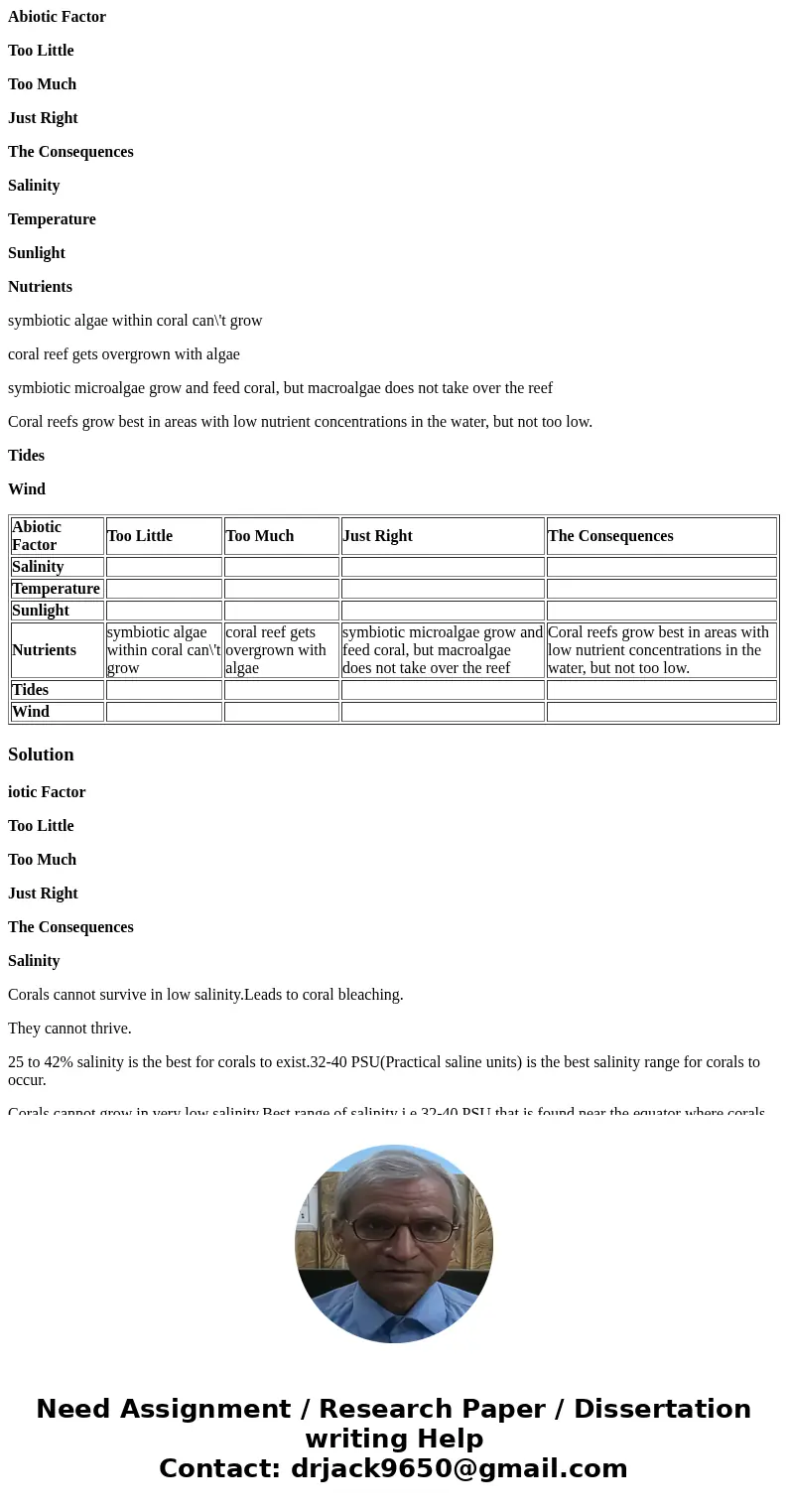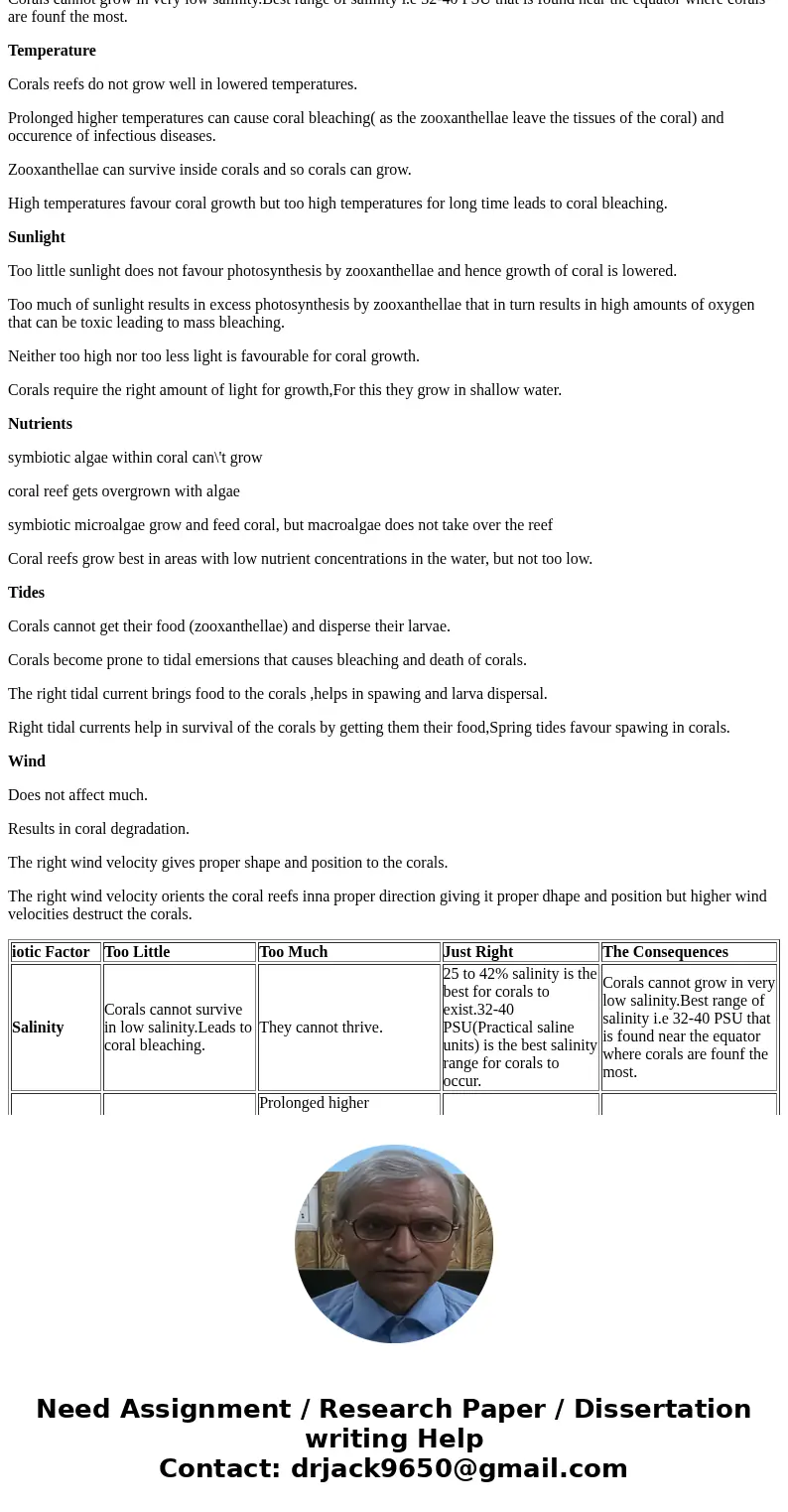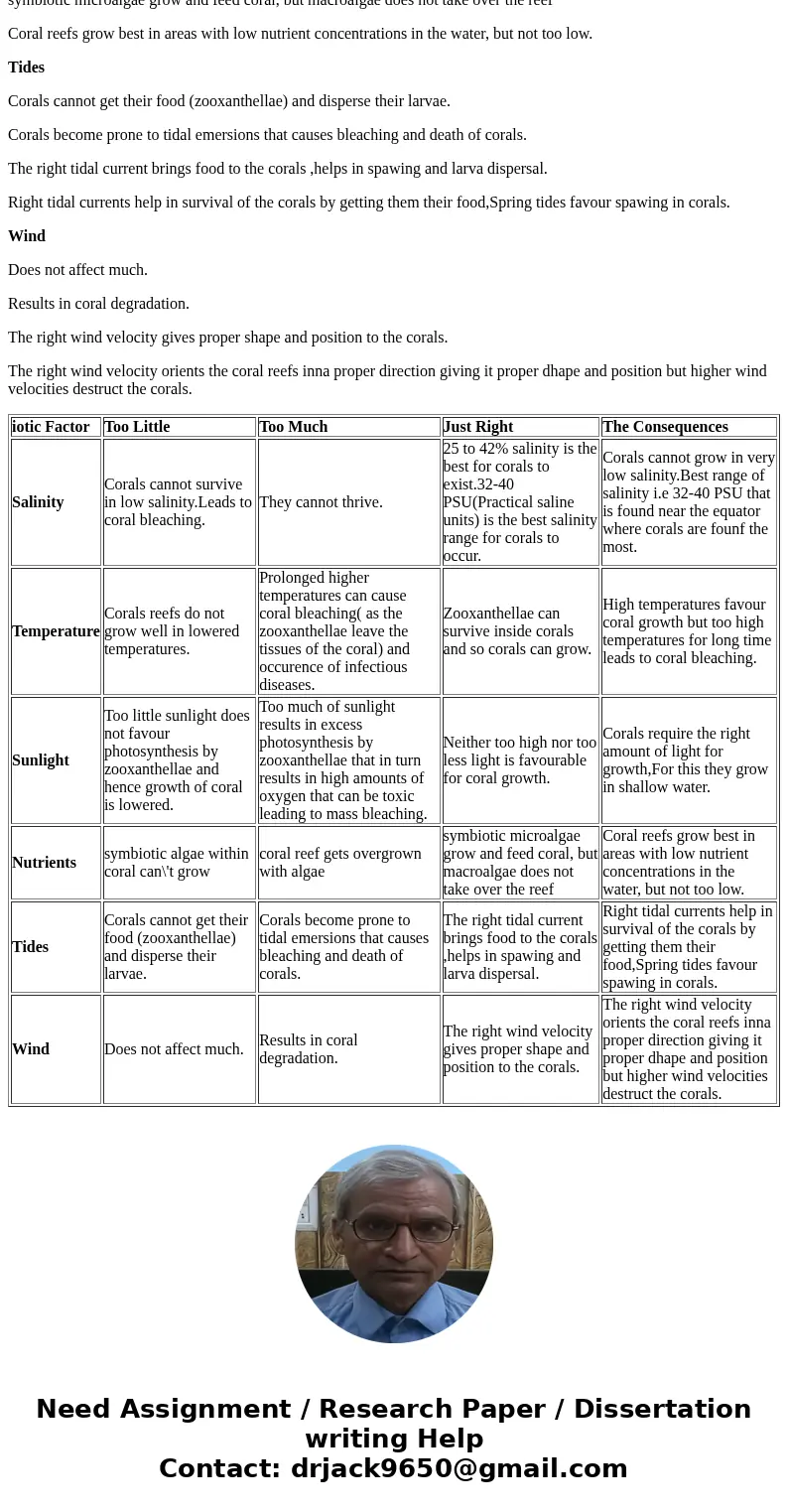Abiotic Factor Too Little Too Much Just Right The Consequenc
Abiotic Factor
Too Little
Too Much
Just Right
The Consequences
Salinity
Temperature
Sunlight
Nutrients
symbiotic algae within coral can\'t grow
coral reef gets overgrown with algae
symbiotic microalgae grow and feed coral, but macroalgae does not take over the reef
Coral reefs grow best in areas with low nutrient concentrations in the water, but not too low.
Tides
Wind
| Abiotic Factor | Too Little | Too Much | Just Right | The Consequences |
| Salinity | ||||
| Temperature | ||||
| Sunlight | ||||
| Nutrients | symbiotic algae within coral can\'t grow | coral reef gets overgrown with algae | symbiotic microalgae grow and feed coral, but macroalgae does not take over the reef | Coral reefs grow best in areas with low nutrient concentrations in the water, but not too low. |
| Tides | ||||
| Wind |
Solution
iotic Factor
Too Little
Too Much
Just Right
The Consequences
Salinity
Corals cannot survive in low salinity.Leads to coral bleaching.
They cannot thrive.
25 to 42% salinity is the best for corals to exist.32-40 PSU(Practical saline units) is the best salinity range for corals to occur.
Corals cannot grow in very low salinity.Best range of salinity i.e 32-40 PSU that is found near the equator where corals are founf the most.
Temperature
Corals reefs do not grow well in lowered temperatures.
Prolonged higher temperatures can cause coral bleaching( as the zooxanthellae leave the tissues of the coral) and occurence of infectious diseases.
Zooxanthellae can survive inside corals and so corals can grow.
High temperatures favour coral growth but too high temperatures for long time leads to coral bleaching.
Sunlight
Too little sunlight does not favour photosynthesis by zooxanthellae and hence growth of coral is lowered.
Too much of sunlight results in excess photosynthesis by zooxanthellae that in turn results in high amounts of oxygen that can be toxic leading to mass bleaching.
Neither too high nor too less light is favourable for coral growth.
Corals require the right amount of light for growth,For this they grow in shallow water.
Nutrients
symbiotic algae within coral can\'t grow
coral reef gets overgrown with algae
symbiotic microalgae grow and feed coral, but macroalgae does not take over the reef
Coral reefs grow best in areas with low nutrient concentrations in the water, but not too low.
Tides
Corals cannot get their food (zooxanthellae) and disperse their larvae.
Corals become prone to tidal emersions that causes bleaching and death of corals.
The right tidal current brings food to the corals ,helps in spawing and larva dispersal.
Right tidal currents help in survival of the corals by getting them their food,Spring tides favour spawing in corals.
Wind
Does not affect much.
Results in coral degradation.
The right wind velocity gives proper shape and position to the corals.
The right wind velocity orients the coral reefs inna proper direction giving it proper dhape and position but higher wind velocities destruct the corals.
| iotic Factor | Too Little | Too Much | Just Right | The Consequences |
| Salinity | Corals cannot survive in low salinity.Leads to coral bleaching. | They cannot thrive. | 25 to 42% salinity is the best for corals to exist.32-40 PSU(Practical saline units) is the best salinity range for corals to occur. | Corals cannot grow in very low salinity.Best range of salinity i.e 32-40 PSU that is found near the equator where corals are founf the most. |
| Temperature | Corals reefs do not grow well in lowered temperatures. | Prolonged higher temperatures can cause coral bleaching( as the zooxanthellae leave the tissues of the coral) and occurence of infectious diseases. | Zooxanthellae can survive inside corals and so corals can grow. | High temperatures favour coral growth but too high temperatures for long time leads to coral bleaching. |
| Sunlight | Too little sunlight does not favour photosynthesis by zooxanthellae and hence growth of coral is lowered. | Too much of sunlight results in excess photosynthesis by zooxanthellae that in turn results in high amounts of oxygen that can be toxic leading to mass bleaching. | Neither too high nor too less light is favourable for coral growth. | Corals require the right amount of light for growth,For this they grow in shallow water. |
| Nutrients | symbiotic algae within coral can\'t grow | coral reef gets overgrown with algae | symbiotic microalgae grow and feed coral, but macroalgae does not take over the reef | Coral reefs grow best in areas with low nutrient concentrations in the water, but not too low. |
| Tides | Corals cannot get their food (zooxanthellae) and disperse their larvae. | Corals become prone to tidal emersions that causes bleaching and death of corals. | The right tidal current brings food to the corals ,helps in spawing and larva dispersal. | Right tidal currents help in survival of the corals by getting them their food,Spring tides favour spawing in corals. |
| Wind | Does not affect much. | Results in coral degradation. | The right wind velocity gives proper shape and position to the corals. | The right wind velocity orients the coral reefs inna proper direction giving it proper dhape and position but higher wind velocities destruct the corals. |



 Homework Sourse
Homework Sourse